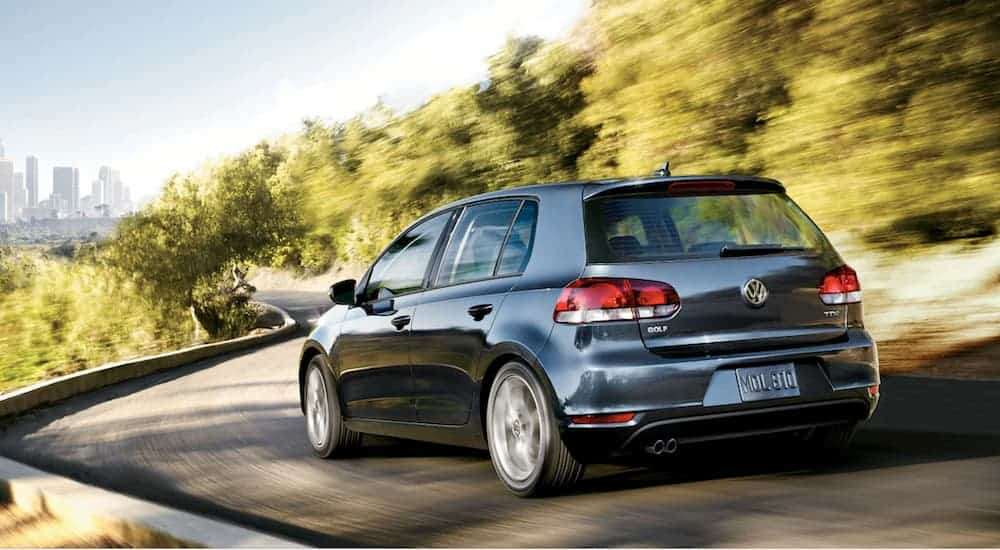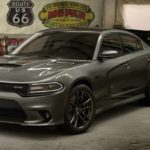Inverted pyramid be damned, we’re going to take a quick trip back in time before we hit you with the latest and most current auto news. Trust us, the context is worth it.
Let’s go back to 2014 when the CARB (California Air Resources Board) started a study on the differences between the emissions, otherwise known as exhaust gas, in European vehicles vs. American vehicles. That’s when some scientists began noticing that some vehicles were emitting emissions that exceeded the recorded totals during their official laboratory emissions test. This wasn’t only against the law; it also proved that something nefarious was going on, and it completely contradicted the intent of those tests.
Volkswagen
As regulators began digging into specific companies, they noticed that Volkswagen’s emissions discrepancies were particularly alarming. Specifically, they found that the brand was meeting the required U.S. standards during official emissions testing. However, when these cars would hit the open road, outside of testing environments, they were producing around 40-times more emissions, an incredible figure that never would have gotten by regulators. This clearly wasn’t a mistake, and investigators quickly learned that the car brand was attempting to circumvent the test.
Ultimately, it was found that Volkswagen’s engineers had manipulated their turbocharged direct injection diesel engines to produce the proper amount of emissions during testing. However, these controls were subsequently deactivated outside of testing scenarios, with more than 11 millions cars (including 500,000 in the United States) having this deceptive technology included in their engines between 2009 and 2015. This was a bad look for Volkswagen and the entire industry.

Predictably, the car brand was quickly slammed for their deceptive emissions practices. The company’s stock dropped by more than a third in the week following the news. Along followed a long list of executives, including CEO Martin Winterkorn and Audi executive Ulrich Hackenberg, either resigning or getting slapped with a suspension. The company was forced to pay a $2.8 billion fine for their attempt to “cheat on government emissions tests.” Volkswagen then subsequently invested more than $18 billion in an attempt to rectify the entire situation.
Furthermore, the company was required to hand over all of their documents that explained their strategy, of course. A subsequent legislature was passed in the United Kingdom that required vehicles to be tested for emissions throughout a respective vehicle’s lifespan. Plus, while Volkswagen was perhaps the “most” guilty and blatant with their cheating, the scandal led to some other car brands being hit with similar fines and repercussions, including Volvo, Jeep, and Hyundai. When all was said and done, the entire ordeal ended up revolutionizing the industry, as governments were now keeping a particular eye on the emissions and the emissions testing of vehicles.
What Now?
How does this apply to anything happening today? Well, both automakers and politicians are now more focused on emissions regulations, and there’s now a major focus on improving future and impending engines. Recently, a handful of automakers reached an agreement with the state of California regarding fuel efficiency and emissions regulations. The state has been continually looking to combat climate change by establishing its own standards, much to the dismay of the Trump administration.
“Ensuring that America’s vehicles are efficient, safe and affordable is a priority for us all,” Ford Motor Co., BMW AG, Volkswagen Group and Honda Motor Co. all said in a joint statement.
President Donald Trump had offered a proposal that would ultimately reduce the standards that were previously established by Barack Obama. However, there were significant concerns among automakers that these swift changes would lead to crippling uncertainty. In other words, as these automakers waited for a resolution, they’d be costing themselves valuable time and money. This uncertain waiting period was the major hold-up in negotiations.
California, a state that is responsible for more than 10-percent of auto sales in the United States, ultimately found a compromise that was somewhere between Obama’s regulations and Trump’s proposal. If the Trump administration had endorsed this recent agreement, the standards could be set for the entire industry. Instead, the administration dismissed the agreement.
“Today’s announcement from CARB has no impact on the EPA’s regulation of greenhouse gas emissions under the Clean Air Act,” said EPA spokesman Michael Abboud. “This voluntary framework is a P.R. stunt that does nothing to further the one national standard that will provide certainty and relief for American consumers.”
While Trump slammed the deal, others were quick to praise the compromise.
“It’s a real breakthrough,” said Dan Lashof, the director of the environmental group World Resources Institute. “I think this is a testament to California’s steadfast determination to make sure we are continuing to make progress on what’s now the biggest source of global warming pollution in the U.S. which is the transportation sector.”
Specifically, Obama’s standards called for vehicles to have around an average fuel efficiency of 46.7-miles-per-gallon by the time 2025 came around. However, Trump’s administration slightly halted those plans, calling for average 37-miles-per-gallon fuel efficiency by 2026. The recent California agreement was intended to “increase the stringency of the requirements at a national average annual rate of 3.7 percent starting in the 2022 model year through 2026. One percent of that annual improvement could be covered by credits awarded for building electrified vehicles” (via David Shepardson of AutoNews.com). This was a deal that seemingly made sense for both the state and automakers, but it’s understandable that Trump’s administration was agitated that the agreement was completed without their knowing.
A History of Compromise
These compromises between automakers and government officials have been happening for decades, even before the Volkswagen scandal that rocked the entire industry. For instance, back in 1978, the U.S. Congress passed a law titled the “Energy Tax Act,” which was part of the broader “National Energy Act.”
Essentially, the government wanted the popular gas guzzlers, a term that was first used during these specific proceedings, off the road. The government wanted an overall improvement in fuel efficiency and renewable energies. Ultimately, the accompanying tax would end up providing automotive companies with a significant incentive to reach the minimum miles-per-gallon requirements.
These slight adjustments in engineering ended up having a significant impact throughout the industry. Car brands were allowed to boost the price of these fuel-efficient vehicles, meaning additional money in their pockets. On the flip side, fuel companies would vicariously lose money due to the rise in fuel efficiency.
Meanwhile, consumers would also suffer, as they were forced to watch as vehicle and fuel prices climbed through the roof. It’s like a vicious cycle.
As we learned from these past agreements, the compromises and deals have to juggle all of these factors when determining the machinations of any laws. The complexity of the agreement means the two sides can’t simply shake hands when they’re both satisfied. Instead, they have to account for the impact this will have on every other player in the industry.
What does this mean for you, the consumer? Well, not much for the time being. Clearly, the government and automakers are committed to improving fuel efficiency across the industry. While this will help your wallet when it comes to trips to the gas station, it means you should expect to pay more for any new vehicles in the upcoming years.





